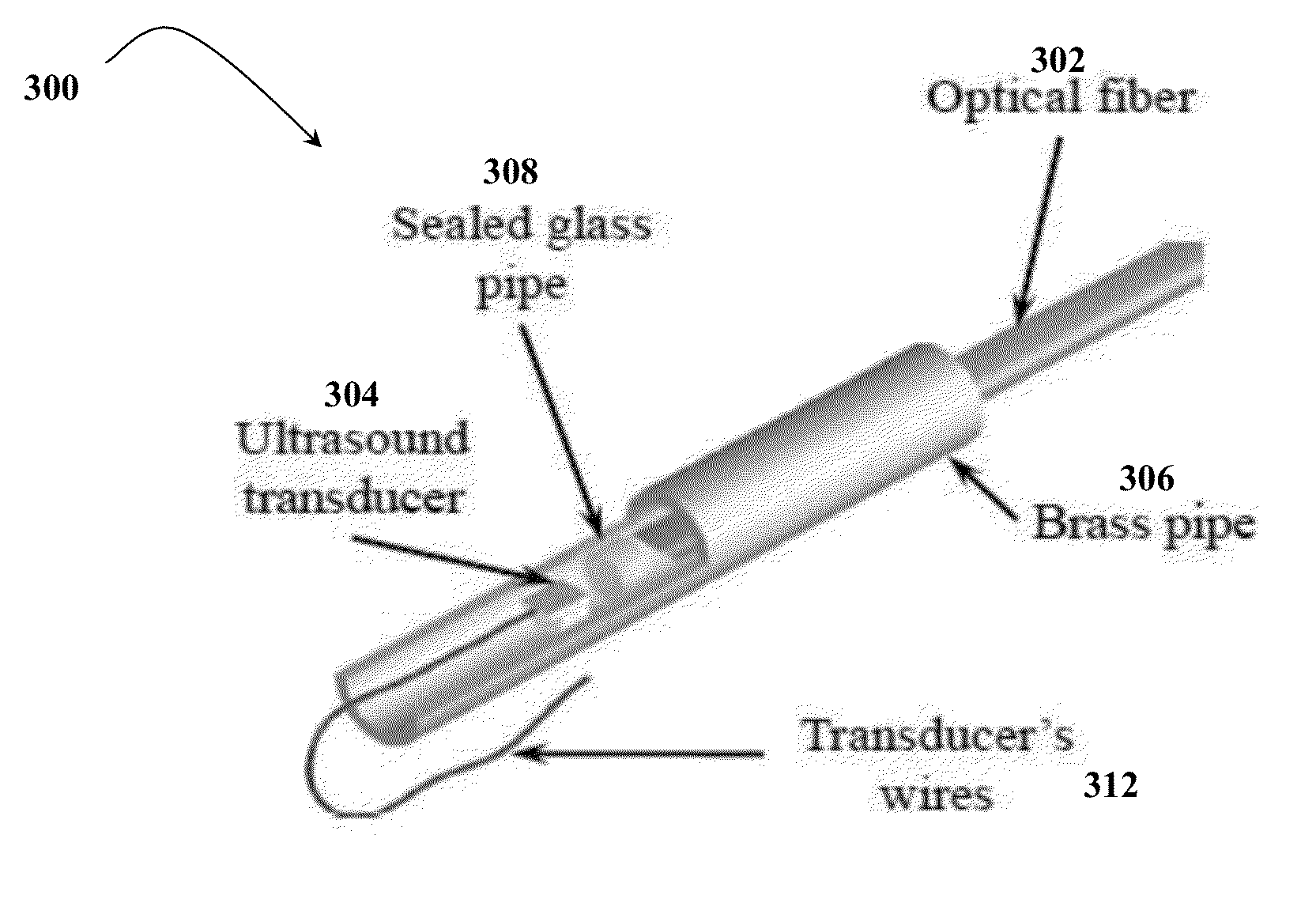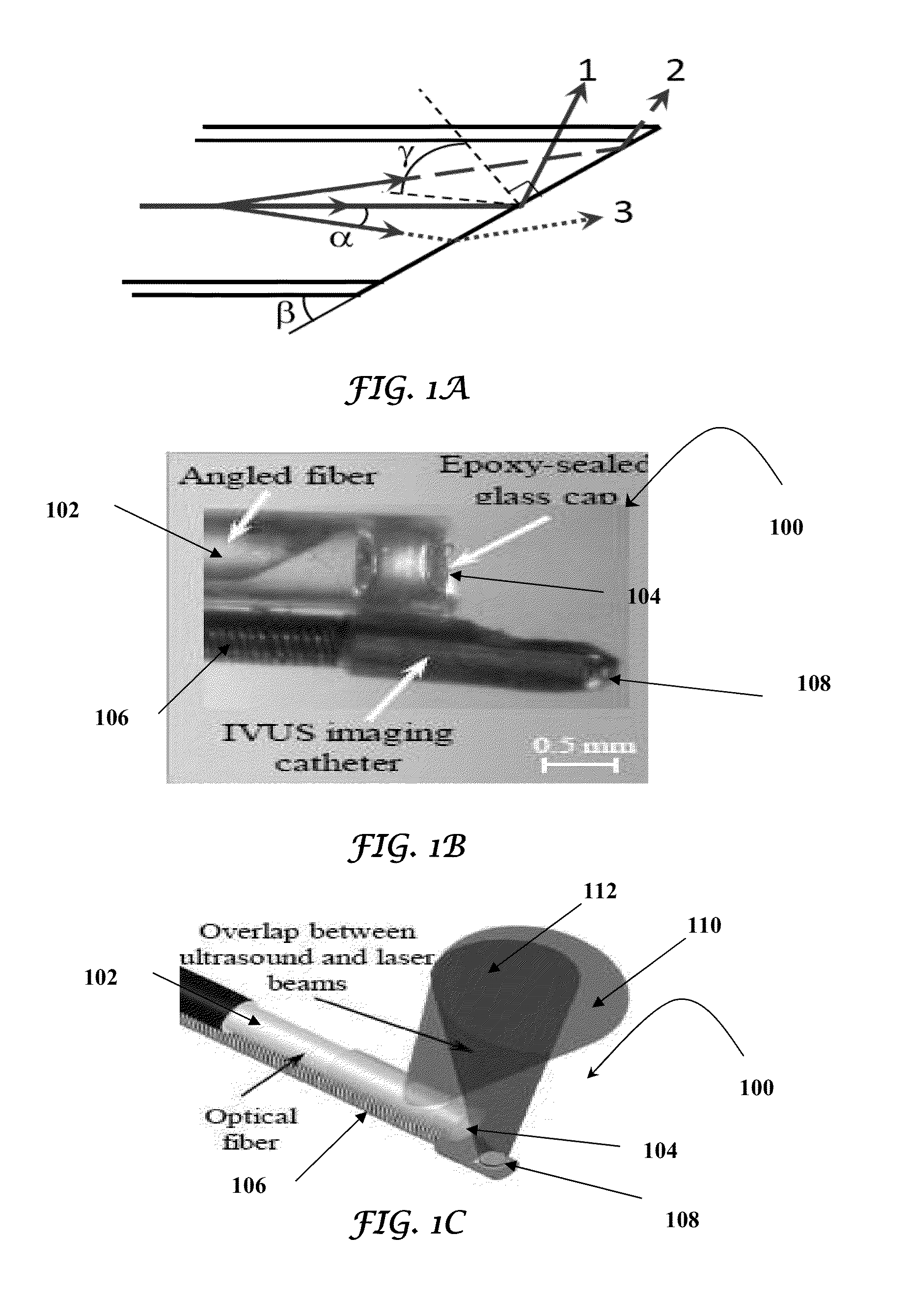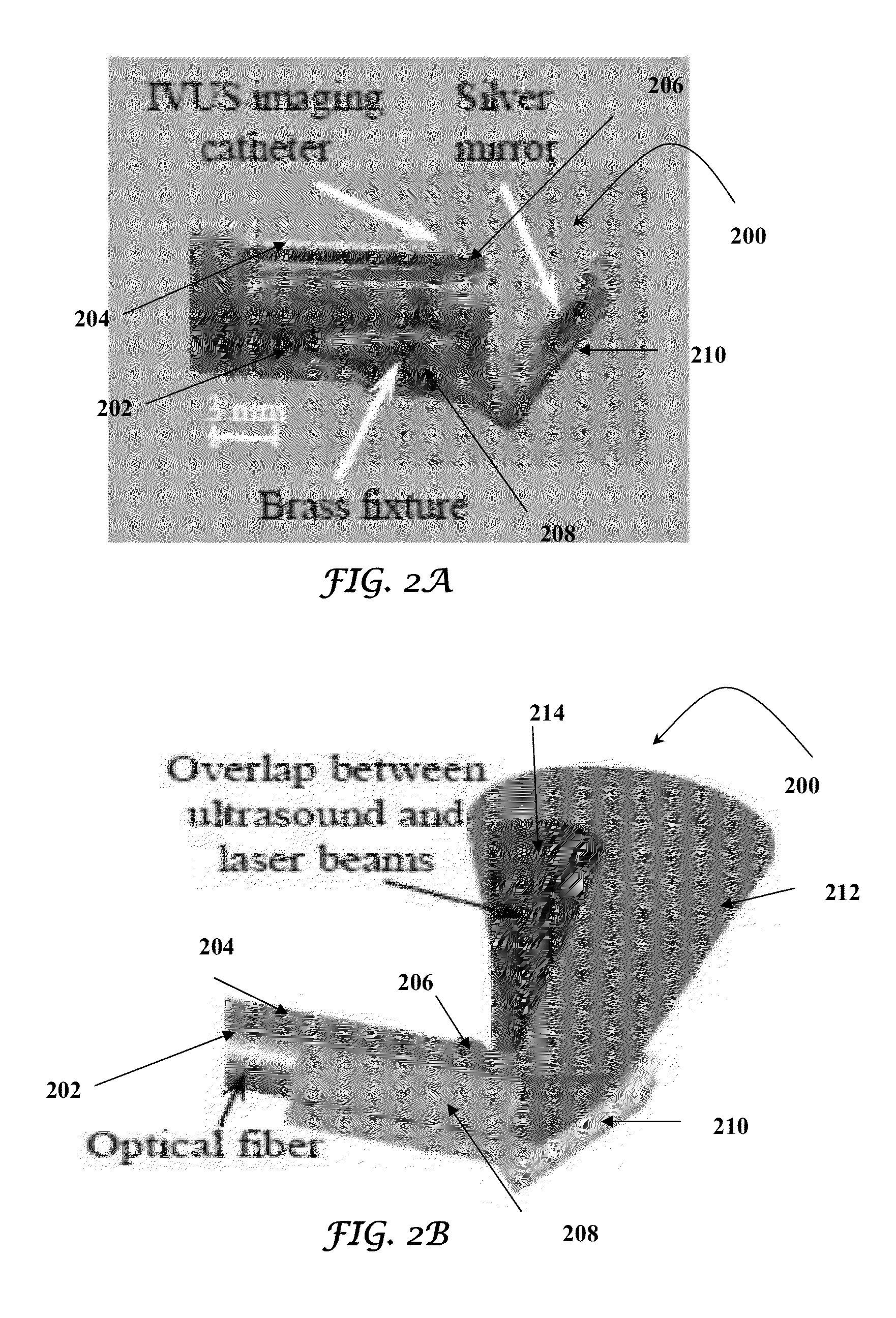Catheter for Intravascular Ultrasound and Photoacoustic Imaging
a technology of intravascular ultrasound and photoacoustic imaging, which is applied in the field of intravascular catheter design and fabrication, can solve the problems that the catheter cannot be used for combined ivus, ivpa and elasticity imaging and radiation and/or acoustic therapy, and achieves the effects of reducing the intensity of the photoacoustic signal of the lipid based tissue, increasing the temperature, and modifying the contras
- Summary
- Abstract
- Description
- Claims
- Application Information
AI Technical Summary
Benefits of technology
Problems solved by technology
Method used
Image
Examples
example 1
[0050]The present invention describes two designs of an integrated intravascular ultrasound, photoacoustic (IVUS / IVPA) and elasticity imaging catheter capable both of combined intravascular ultrasound, photoacoustic, and elasticity imaging and of radiation and / or acoustic therapy on an artery and / or nearby tissues. Such catheter include of one or more ultrasound units that are either a single element ultrasound transducer or an ultrasound array transducer or a combination thereof, and one or more optical units that comprise one or more optical fibers, one or more optical bundles or a combination thereof. A light delivery system is mounted on one or more optical units. The one or more ultrasound units and one or more optical units are assembled into a single device such that ultrasound and optical beams propagate orthogonally to the longitudinal axis of the catheter with maximum overlap with each other.
[0051]The elasticity imaging of an artery is performed by one or more ultrasound u...
example 2
[0090]The location and size of the necrotic lipid core is critical for analyzing the stability of atherosclerotic plaques (Falk 2006). Identification of vulnerable plaques depends on the distribution of lipid (Virmani 2011). Unfortunately, current invasive imaging modalities cannot reliably delineate spatially resolved lipid distribution (Vancraeynest et al. 2011). Intravascular optical coherence tomography (OCT) can detect lipid, but it lacks the imaging depth to assess the area of the lipid-rich plaques and requires temporal removal of luminal blood during imaging. Intravascular magnetic resonance imaging (MRI) has a better imaging depth, but it requires an occluding balloon to stabilize the catheter. Intravascular near-infrared spectroscopy (NIRS) can be performed in presence of blood, but the signals are not depth-resolved. Thus, a catheter-based imaging modality—ultrasound-guided intravascular photoacoustic imaging—was used to detect the depth-resolved distribution of lipid in ...
PUM
 Login to View More
Login to View More Abstract
Description
Claims
Application Information
 Login to View More
Login to View More - R&D
- Intellectual Property
- Life Sciences
- Materials
- Tech Scout
- Unparalleled Data Quality
- Higher Quality Content
- 60% Fewer Hallucinations
Browse by: Latest US Patents, China's latest patents, Technical Efficacy Thesaurus, Application Domain, Technology Topic, Popular Technical Reports.
© 2025 PatSnap. All rights reserved.Legal|Privacy policy|Modern Slavery Act Transparency Statement|Sitemap|About US| Contact US: help@patsnap.com



